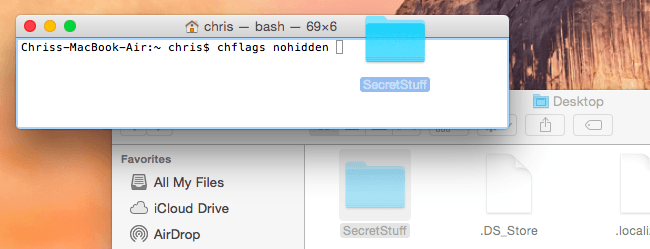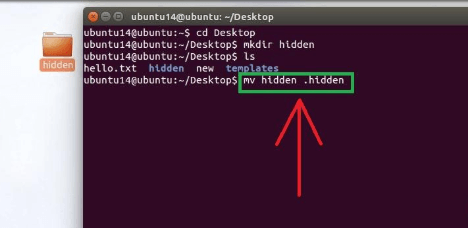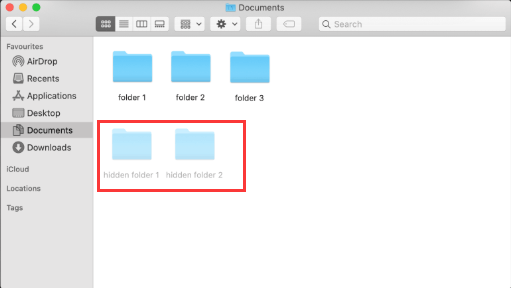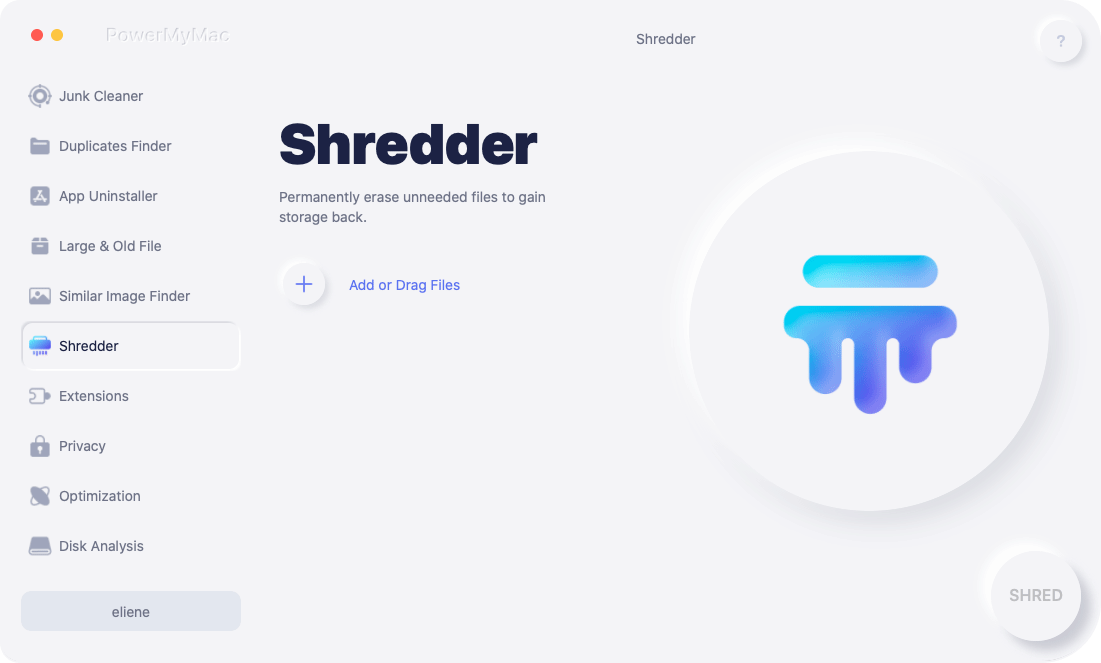How To Get To Applications Folder On Mac
Like Windows and Linux, Macs come with a technique to create a hidden folder. However, Mac OS X cloaks these options in secrecy making it a bit catchy. A covert binder entails setting the "hidden" option for it.
The Finder or other apps will then overlook and non throw up this folder by default. This comes in handy if yous share your Mac with someone. Failsafe methods similar encryption add an extra layer on your veil to make data completely inaccessible.
Then how to create a subconscious binder on Mac ? How to brand private folder on Mac? At the beginning, get more acquaintance with the Terminal because it's the but way to hide a binder on Mac if you've no third-political party app.
Contents: Part 1. How to Hide A Binder on Mac with TerminalPart 2. Other Methods to Make Folders HiddenPart 3. Wrap-Up
Part ane. How to Hide A Binder on Mac with Final
Solution #i Configure the Hidden Flag in Last
- Launch Finder.
- Click on Applications in the left panel.
- Navigate to the human foot to access Utilities. Double-click to fill up in the Utilities carte du jour.
- Double-click the Terminal.
- Enter the following line:
chflags hidden. - Yank the folder you wish to obscure into the Terminal window.
- A path pops up in the Terminal window; concord down "Enter" to subconscious flag.
- Get rid of the hidden flag in the aforementioned vein past changing the command to
chflags nohidden.
Solution #2 Hide a New Folder Directly Using Last
- First, launch a Terminal-hold downwardly
Command+ Infinite, enter Last, and striking Enter. In the Concluding, punch out the post-obit line:chflags hidden. - Create a fresh folder on your desktop. Feed it with contents y'all wish to hide.
- Elevate-and-drib it in the Terminal window. Examine information technology to spot the folder's path.
- Concord down to mask the binder.

Corollary Flim-flam: Unhide a Folder
You might also wonder how do I make a hidden folder not subconscious Mac. Follow the same command to a higher place and modify subconscious to nohidden. Just enter the post-obit line into the Last, typing a space later on information technology: chflags nohidden.
If you jotted down the path of your folder, enter it into the Terminal. Otherwise, you tin can use the aforementioned trick to unmask hidden folders via Finder before you drag-and-drop information technology into the Terminal.
Yous tin can too concur down the up pointer button at the Terminal to explore earlier commands, pinpointing the control that hid the binder. With the left arrow key, navigate to the "hidden" portion of the command and reset it to "nohidden", and then hit Enter.
Striking Enter subsequently and the folder reconfigures to unhidden so you can show subconscious files and recollect them unremarkably.
Part 2. Other Methods to Make Folders Hidden
Method 1: Hide a Folder with the 'MV' Command
The " mv command " in Terminal transfers a binder from one destination to another. Appropriately, y'all can invoke the " mv " command to translocate the folder from its default nook to a menses binder.
Period folders remain automatically subconscious because they business firm system-critical data. It works just similar in Windows when moving an detail to the System32 binder.
To make your binder invisible, launch Terminal and enter mv filename .filename. Substitute " filename " with the title of the particular y'all desire to mask and the ".filename" parameter with the heading of the system-protect file.
You only demand to rename your contents to start with a ".", or period, character. You cannot rename anything with the Finder window, you'll demand the Terminal. You tin can too launch multiple Terminal commands that will disembalm these files.

Method two: Empty Contents into the Library Folder
The Library folder gives you another trick up your sleeve. It'southward concealed past default, and thus ideal to mothball top-underground information. Only launch your Finder, right-click, fire upwardly a fresh binder, and yank all the contents in at that place.
Method 3: Hide a Folder with Final Aliases
Aliases connote to macros or shortcuts to different commands. Launch the Terminal, enter or paste the following command: sudo nano ~/.bash_profile . Once prompted, make full in the username and password for your agile admin account. Striking Render to go on and navigate to the end of the opened .bash_profile. Enter or paste the following command:

Save this file and close downward Terminal. The adjacent time you'll open up Finder, you have done making folder unsearchable Mac, and all your chosen folders become hidden.
Method iv: FileVault
FileVault converts a hard bulldoze into a Fort Knox-like vault locked without the required nil: the username and countersign for your admin business relationship. Click the Apple tree trademark nestled in the peak-left edge of your screen.
Hitting System Preferences and Security & Privacy . Navigate to the FileVault tab and hitting the padlock icon to innovate changes. Hit the Turn On FileVault primal. In the subsequent dialog box, choose the recovery technique. Click Proceed twice to wrap up the procedure.
Method 5: 3rd-Party File-Hiding Tools
Dedicated tools lock your folders away from unauthorized users. The market has a variety of software to cross-shop. Open up-source alternatives bolster your business relationship's security.

Golden Tip: Tidying Up Your Mac
iMyMac PowerMyMac optimizes your computer operation at full pelt. It helps you delete purgeable files with a unmarried click. Rapidly and securely wipe out junk from your Mac to carve out more storage infinite.
Locate and erase the redundant email attachments, iTunes backup, multi-languages, and outdated or hidden folders. It scans and wipes away supermassive files yous no longer need. The cherry on the height for PowerMyMac is the health indicator engineered to determine the status of CPU, Deejay, and Memory.
It integrates a preview characteristic to ensure you merely wipe away prophylactic-to-delete contents. Declutter your Mac and speed it up in a single click. It has a gratuitous trial to give your device a lease of new life with a thorough cleanup and optimization.

Function three. Wrap-Up
There you have it, how to create a hidden folder on Mac. Whether you share your computer or contemplate unauthorized access, hiding a folder is a no-brainer. You can create a hidden folder by invoking Terminal. Making a folder invisible keeps it abroad from prying eyes or inadvertent discovery. Unfortunately, estimator geeks have mastered the fine art of summoning hidden contents into manifestly sight. Encryption provides a foolproof way to guard personal troves of data.
Prying optics also read how to unhide files or folders on Mac; you've to throw them off the scent with an impermeable layer of security.
Source: https://www.imymac.com/mac-tips/how-to-create-a-hidden-folder.html
Posted by: smithgoodgicess59.blogspot.com


0 Response to "How To Get To Applications Folder On Mac"
Post a Comment